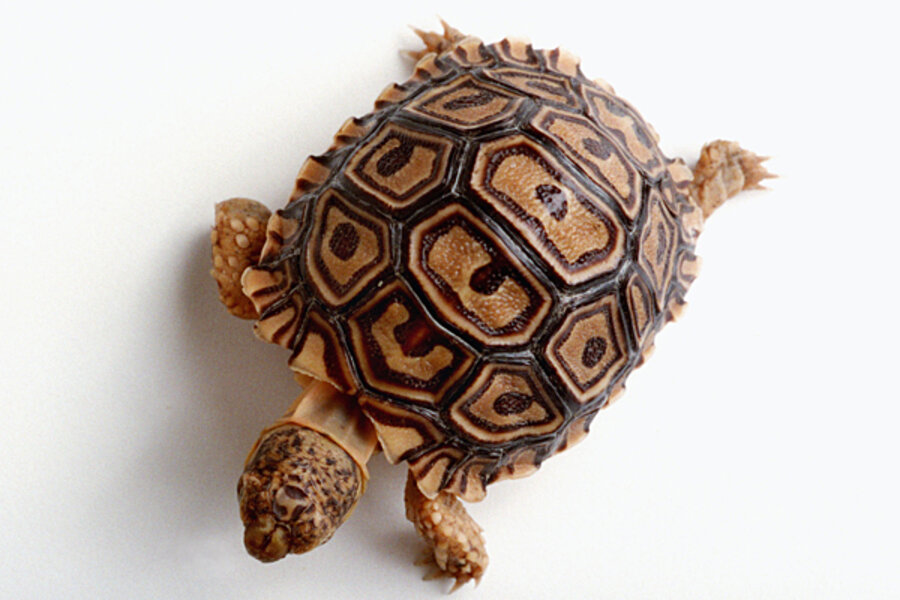How did the turtle get its shell?
Loading...
How did the turtle get its shell?
You'd be forgiven for thinking that Rudyard Kipling worked this out a century ago. It turns out that it's a tough one for biologists to crack.
Many think that the turtle's shell developed from bony scales that fused with its ribcage, similar to what happened with armadillos and some lizards. Others think that the shell developed from the ribs themselves, which gradually grew broader and straighter until eventually forming an exterior shell.
Scientists found little evidence either way. The oldest known turtle fossils, which are about 210 million years old, already had a fully formed shell, leaving paleontologists with few clues as to how it developed.
But now, an analysis of the fossilized remains of a creature that roamed what is now South Africa some 260 million years ago supports the second story.
In a study published in the journal Current Biology, scientists at Yale University, the Smithsonian Institution, and the New York Institute of Technology examined 45 specimens of Eunotosaurus, an extinct genus of primitive reptile. They found that many features of Eunotosaurus – its distinctive T-shaped ribs, its elongated vertebrae – mark it as an ancestor of the turtle.
“Now we’ve got an intermediate shell, a transitional form that bridges the gap between turtles and other reptiles and helps explain how the turtle shell evolved,” said lead author Tyler Lyson, a curatorial affiliate of the Yale Peabody Museum of Natural History and a Smithsonian postdoctoral researcher, in a Yale press release.
The idea that Eunotosaurus is a turtle ancestor is not new. After it was discovered in the late 19th century, some scientists speculated that it belonged to the same order as modern turtles. There was very little hard evidence for this claim, however, and support for it eventually vanished as more and more scientists became convinced that turtle shells developed armadillo-like, via external scales.
But then, five years ago, a 220-million-year-old fossil unearthed in China revealed the existence of a turtle-like reptile with a fully developed underbelly shell and broad, flat ribs – and no bony scales. This animal, called Odontochelys semitestacea, showed that shells can form without scales. This discovery prompted researchers to revisit Eunotosaurus.
“Our data supports Eunotosaurus as an important link in that evolutionary chain that eventually produced modern turtles,” said New York Institute of Technology anatomist study coauthor Gaberiel Bever, in an NYIT press release. "This is an earlier version of the turtle."
Not all scientists will be convinced by the team's evidence, however. Eunotosaurus lacks some essential turtle features, such as a hard underbelly.
"This is a highly contentious area," Dr. Lyson told the Los Angeles Times. "I'm sure I won't convince everybody, but I think it's a really good step forward."








